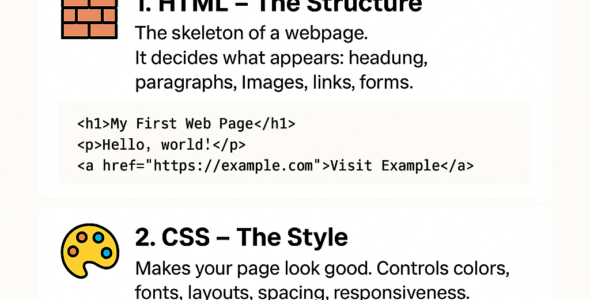In this module, we'll explore the intersection of CSS and JavaScript, including CSSOM, CSS-in-JS, and JavaScript-controlled CSS animations. You'll learn about the syntax, examples, and best practices for using CSS and JavaScript together to create dynamic and interactive web applications.
CSS and JavaScript
- CSSOM (CSS Object Model): A JavaScript API for interacting with CSS.
Syntax: document.styleSheets
Example: document.styleSheets[0].cssRules
- CSS-in-JS: A technique for writing CSS in JavaScript.
Syntax: const styles = { ... }
Example: const styles = { backgroundColor: 'red', fontSize: '24px' }
- JavaScript-controlled CSS Animations: Using JavaScript to control CSS animations.
Syntax: element.animate([...], { ... })
Example: element.animate([ { opacity: 0 }, { opacity: 1 } ], { duration: 2000 })
Examples
- Accessing CSS rules using CSSOM:
const sheet = document.styleSheets[0];
const rules = sheet.cssRules;
rules.forEach(rule => {
console.log(rule.selectorText);
});
- Writing CSS-in-JS:
const styles = {
backgroundColor: 'red',
fontSize: '24px'
};
const element = document.getElementById('myElement');
element.style = styles;
- Controlling CSS animations with JavaScript:
const element = document.getElementById('myElement');
element.animate([
{ opacity: 0 },
{ opacity: 1 }
], {
duration: 2000,
iterations: Infinity
});
Best Practices
- Use CSSOM to interact with CSS in JavaScript.
- Use CSS-in-JS to write dynamic CSS styles.
- Use JavaScript-controlled CSS animations to create interactive effects.
- Keep CSS and JavaScript separate for maintainability.
- Use JavaScript to enhance CSS, not replace it.
- Test your CSS and JavaScript code together to ensure compatibility.
By mastering the intersection of CSS and JavaScript, you'll be able to create dynamic and interactive web applications that leverage the strengths of both technologies.

